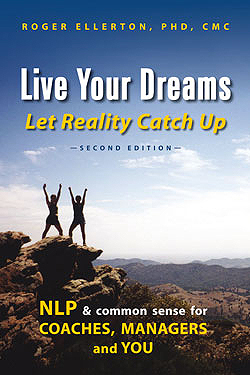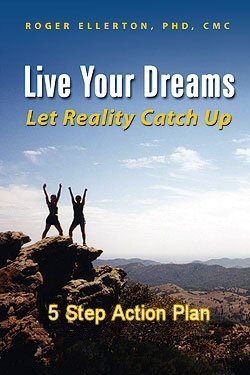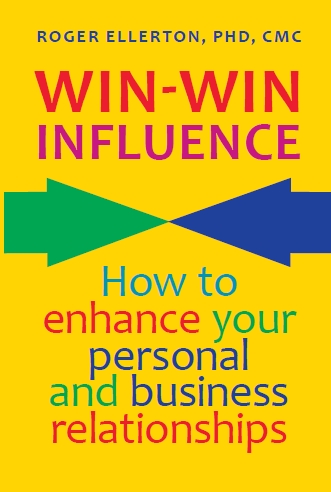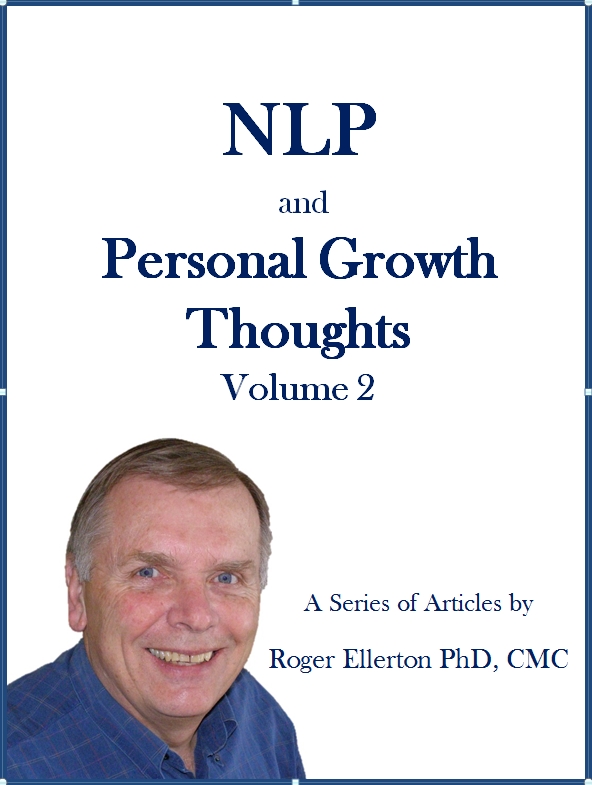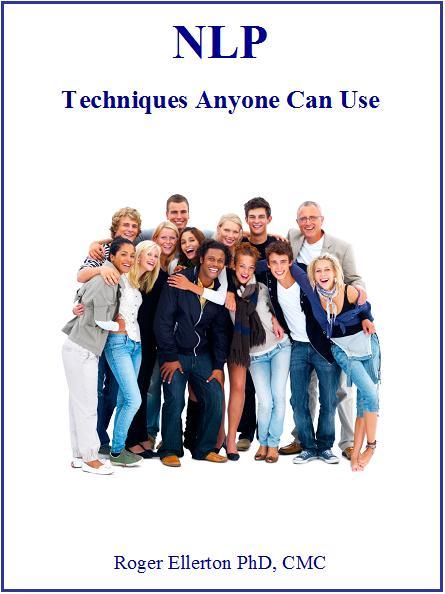Modalities and Representational Systems
By Roger Ellerton Phd, ISP, CMC, Renewal Technologies Inc.
This article may not be republished without written permission from Roger Ellerton/Renewal Technologies Inc. If you republish this article without permission, you will be in violation of copyright law and sent an invoice. You may share this and other pages with your friends by linking directly to this page from your website or blog.
Visual (V), auditory (A), kinesthetic (K), gustatory (G) and olfactory (O) are the five primary sensory modalities that we use to experience the world around us (the neuro of neuro linguistic programming - see the article, What is NLP?). These modalities are also known as representational systems (rep systems) as they are the primary ways we represent, code, store and give meaning or language (linguistic) to our experiences.
Often, we work with three representational systems: visual, auditory and kinesthetic (referred to as VAK or VAK learning styles). Although primary senses, gustatory and olfactory do not play a major role and are often included with kinesthetic. However, if you or your client is a chef, works with fragrances, or is a person who uses and relies on your gustatory or olfactory senses to a large degree, then these senses need to be considered separate from kinesthetic. Many NLP practitioners split the visual and auditory representational systems into two components - visual analog (Va shape and colour), visual digital (Vd written symbols); auditory tonal (At sound) and auditory digital (Ad words - discrete verbal symbols) - and refer to the combined visual digital and auditory digital as auditory digital (however, the correct term is digital). As you will see in later articles, we also distinguish if the modality is internal or external. For example, if I am looking at my car, this is visual external and indicated as Vae. On the other hand, if I am seeing my car as a mental image in my mind, then this is visual internal and indicated as Va i.
We can access more than one representational system at the same time -- listening to music Ate, while seeing a picture of my spouse in my mind's eye Va i. As we will discover when we cover strategies, our behaviour is produced from a mixture of internal and external sensory experience.
For our purposes in this article, I will refer to visual analog as visual (V) and auditory tonal as auditory (A). K will refer to kinesthetic and D to digital (remember many authors refer to this as auditory digital).
Preferred Representational Systems
We use all of our senses and depending on the circumstances may focus on one or more of them - when listening to a favorite piece of music, we may close our eyes to more fully listen and to experience certain feelings.
Each of us have preferred representational systems. For example, when learning something new, some of us may prefer to see it or imagine it performed, others need to hear how to do it, others need to get a feeling for it, and yet others have to make sense of it. In general, one system is not better than another. However, depending on the context, one or more of the representational systems may be more effective: landscape painters - visual, musicians -- auditory, athletes -- kinesthetic and mathematicians -- digital. People at the top of their profession typically have the ability to use all of the representational systems and to choose the one most appropriate for the situation.
Depending on your preferred representational system(s), you may exhibit certain behaviours or characteristics. Before exploring these behaviours, please note that depending on what is going on in your life, or the context, you may change your preferred representational system(s). Hence, it is more useful to notice the representational system a person is currently favouring, rather than pigeon-holing a person.
The following are generalizations on the characteristics of people with a preference for visual, auditory, kinesthetic or digital. Remember, with all generalizations, there are always exceptions.
Visual
People with a visual preference, will tend to:
- Be organized, neat and well-groomed. Why? Because they want to look good. And what do they expect from you? Yes, the same thing!
- Use visualization for memory and decision making - often getting insights about something.
- Be more imaginative and may have difficulty putting their ideas in words.
- Speak faster than the general population. Why? Because they have a picture(s) in their mind and if it is a moving picture, there is a lot to tell in so little time!
- Prefer in-person interactions - to see the other person and his/her reactions.
- May seem to talk about disjointed topics. Why? Because they see the whole picture and it is easy to jump around to different parts of it.
- May have difficulty putting their ideas in words. Why? Because there is so much they see in their minds.
- Want to see or be shown concepts, ideas or how something is done.
- Want to see the big picture.
- May not remember what people have said and become confused if you give them too many verbal instructions. However, if you can draw a map or picture for them, then they can see what you are saying.
- Remember faces more easily than names.
- Be distracted by visual activity and less so by noise.
Auditory
People with an auditory tonal preference, will tend to:
- Be more aware of subtle change in the tone of your voice and be more responsive to certain tones of voice.
- Perceive and represent sequences and are able to remember directions or instructions more easily.
- Learn by listening and asking questions.
- Enjoy discussions and prefer to communicate through spoken language rather than the written word.
- Talk through problems and like to have someone available to serve as a sounding board for their ideas.
- Need to be heard.
- Be easily distracted by noise.
Kinesthetic
People with a kinesthetic preference, will tend to:
- Speak slower than the general population. Why? Because they need time to get in touch with how they feel about the topic.
- Be more sensitive to their bodies and their feelings and respond to physical rewards and touching.
- Learn by doing, moving or touching.
- Dress and groom themselves more for comfort than how they look.
- Make decisions based on their feelings.
- Stand closer to other people than those with a visual preference - to feel the other person's energy, whereas the person with a visual preference will stand back to see more of the other person (body language, etc.).
Digital
Digital is devoid of the senses. People with an auditory digital preference, will tend to:
- Have a need to make sense of the world, to figure things out, to understand.
- Talk to themselves and carry on conversations with you in their mind. Often they will say they remember discussing something with you, when you actually did not have the conversation. They did, however, in their mind!
- Learn by working things out in their mind.
- Not to be spontaneous, as they like to think things through.
- Have logic play a key role in the decision process as do facts and figures.
- Memorize by steps, procedures, sequences.
I have a PhD in Statistics, does this give you some idea as to my preferred representational system (at least when I was working on my PhD. Remember, I may have changed my preferences over time.)? If you said digital (facts and figures, logic), you are correct. I was able to visualize mathematical formulations in my mind and work them through before actually writing them down on paper. Many scientists and inventors have a highly developed ability to visualize (analog or digital).
Can you see yourself in one or more of these representational systems, or does one sound better than the others, or do you feel one is a better fit than another or does one just make sense to you? In a subsequent article, we present a VAK preference assessment to help you decide which is(are) your preferred representational system(s). Use this VAK test with your friends to get a better understanding of their preferences and enhance your relationships.
And NLP is Much more than that!
Author: Roger Ellerton is a certified NLP trainer, certified management consultant and the founder and managing partner of Renewal Technologies. The above article is based on his book Live Your Dreams Let Reality Catch Up: NLP and Common Sense for Coaches, Managers and You.
Copyright © 2003, 2009, 2015, Renewal Technologies Inc. All rights reserved.


